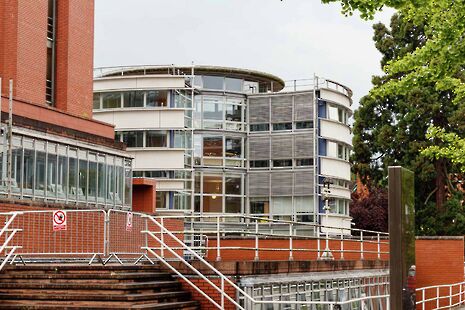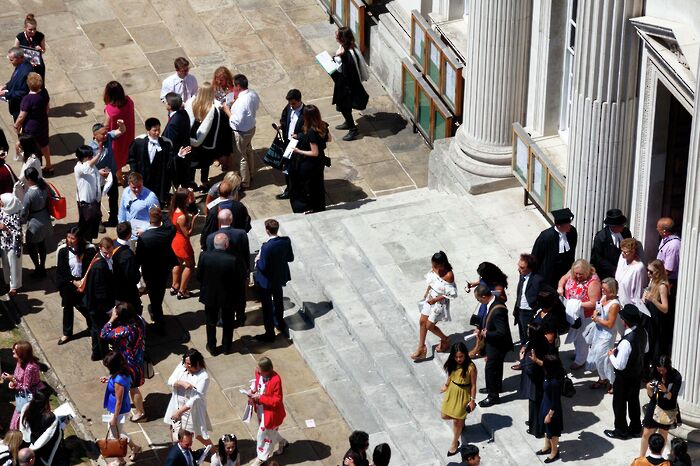Redressing the balance: Expanding access in private-school dominated courses
From Classics to Theology, what are the faculties with the lowest state-school intakes doing to improve access?

Cambridge frequently comes under fire for failing to admit a student body representative of the wider UK population, particularly with regards to its disproportionately high intake of students from private schools, as compared with nationwide figures.
Even then, in certain subjects, the proportions of state-educated students are markedly lower than the university-wide average.
In 2017/18, the latest admissions cycle for which full data is publicly available, Classics, History of Art, Land Economy and Theology, Religion and Philosophy of Religion saw the smallest proportions of their Home offers, less than 55%, sent out to state-educated* students.
State-educated students make up around 90% of UK-domiciled university entrants across the UK. In Cambridge, however, even though the latest admissions cycle reportedly saw a new record for state school intake, this figure has in recent years stood at just over 65%.
Varsity reached out to those faculties with the smallest proportions of state-educated students to see how they’ve been working to improve access and outreach in light of such figures.
Classics
The Classics three-year course – which is, incidentally, the course which saw the highest admission success rate, standing at 44.7% – requires all applicants to have studied Latin at A-level.
As confirmed by a spokesperson from the Classics department, only “a bit over a thousand” UK students study Latin A-level, with the vast majority of these coming from private schools.
As a result, just under 4 in 5 applications from domestic students to the three-year Classics course came from privately-educated pupils.
The Faculty’s solution to this problem was to introduce a four-year course which does not require Latin A-level. This course is exactly the same as the three-year course, but includes a preliminary year in which students are able to learn Latin from scratch.
Last year, around 90% of offer-holders for the four-year course come from state schools. But while applications for the foundation year have been increasing, the number of places in the four-year course remains still significantly smaller than in the original 3-year course, which is the most private-school dominated of all Cambridge undergraduate courses.
2018, for example, saw 19 students admitted to the four-year course, in comparison to the 57 on the three-year course. Explaining this disparity, Dr David Butterfield, one of the Faculty of Classics Access and Outreach Officers, commented: “Institutionally, in terms of the resources, it is difficult as it stands for us to take more than 30 prelims [students on the first year of the 4-year Classics course].”
However, he added that “the number of prelims we take is growing […] and hopefully counterbalancing, as best we can, the steadily shrinking three-year course.” In the most recent round of applications, there was a record high of 66 applicants to the four-year course.
To encourage Latin as an extracurricular in schools that are unable to support it as a full subject, the Cambridge School Classics Project offers free resources to teachers. The Faculty also sends current undergraduate students to six local primary schools to teach Latin, as part of their attempt to “encourage Classics extracurricularly in schools that simply aren’t able to support it in the timetable.”
The Faculty of Classics also run the ‘Come, See, Be Inspired’ initiative, which consists of inviting groups of 12 to 36 students from state schools to the Faculty. “They have a day which is made up of a lecture from a current academic, a tour of a college and engagement with a Schools Liaison Officer at that College and lunch there, a tour of the Cast Gallery and a general half-day opening their eyes to the Classics.”
However, Dr Butterfield notes: “For a lot of schools, it is not a simple business to pop to Cambridge”. Therefore, the Faculty plans to expand their unique ‘Come, See, Be Inspired’ initiative into “a much more active, roadshow tour” in schools around the country.
Land Economy
According to a spokesperson for the Department of Land Economy, the subject has an issue with publicity.
State-educated students accounted for only about half of applications from Home Students to Land Economy in the 2017/18 admissions cycle.
“Land Economy is a subject unique to Cambridge and we are working hard to raise its profile among state school students, teachers and careers advisers with a renewed focus on social media promotion and outreach activities.”
“We hold taster lectures for the Sutton Trust Summer Schools, Sutton Scholars, Experience Cambridge, and Teach First and partner on events with Cambridge Schools Eco-Council and other green initiatives. Land Economy also plays an active role in recruitment activities such as the Cambridge Open Days, Oxford and Cambridge Student Conferences, the Cambridge Teachers' Conference, and Subject Master classes.”
They stressed, further, that “the Department has one of the most international intakes of any course, with more than 55% of our applicants coming from overseas."
“The course's intake of UK students is so small that annual fluctuations of only a few students can have a dramatic impact on its maintained/independent school ratio.”
Regardless, the Department is looking to expand its outreach activities through a planned collaboration with Urban Plan, a programme run by the Urban Land Institute for state school students, offering workshops on urban development.”
History of Art
The History of Art course had 38.5% of its incoming students from state schools in October 2019.
As with the case of Land Economy, Christina Faraday, an Affiliated Lecturer in the Department of Art History, noted that they “have this problem of trying to reach students who have never heard of the subject.”
But even those who have heard of it may still be reluctant to apply. She said, “History of Art is not studied much in state schools so state school students are often very reluctant to apply.”
“[History of Art] is seen as this thing that you do from a posh school. It’s not got a very good reputation in that respect, and that’s something that we are painfully aware of and really want to change because History of Art is such a fascinating subject and it’s really for everyone.”
The percentage of offers going to state school students increased from 17% in 2015 to 31% in 2018.
Head of the Department of Art History, Professor Caroline van Eck said that “the Department sees this as a positive reflection of its outreach work over the past few years, which has included active participation in Sutton Trust Summer Schools and a programme of Taster Days throughout the academic years.”
Coming from a state secondary school herself, Faraday said “it was a big decision and it was scary, but I decided to take a risk and apply and I could not have made a better decision.”
Theology, Religion and Philosophy of Religion
The Faculty of Divinity, which teaches Theology, Religion and Philosophy of Religion, also traditionally struggles to assemble a student body representative of wider society.
Dr. Danielle Redhead, the Outreach Officer for the Faculty of Divinity, commented: “Against a backdrop of falling numbers of students taking GCSE and A-level Religious Studies, the Faculty is working hard to engage with students, especially those from widening participation backgrounds.”
To this end, the Faculty hosts regular ‘Study Days’ and Faculty open days, targeting schools that do not traditionally send students to Oxbridge. A spokesperson for the Faculty commented: “We are one of the very few Faculties that actively encourages school visits, during which we put on taster lectures and offer application guidance sessions”.
On top of this, they work with the Department of Education, to produce materials for the teaching of Religious Studies at secondary school and host training days for school teachers.
“Last year, we created the 50 Religious Treasures collection to inspire younger students and we hold an annual film competition for students in Year 9 to Year 13.”
*State schools – also referred to as Maintained schools – include Comprehensive Schools, Grammar Schools, Sixth Form Colleges and Further Education & Tertiary Education Colleges.
 News / Eight Cambridge researchers awarded €17m in ERC research grants27 December 2025
News / Eight Cambridge researchers awarded €17m in ERC research grants27 December 2025 News / News in Brief: carols, card games, and canine calamities28 December 2025
News / News in Brief: carols, card games, and canine calamities28 December 2025 News / Caius mourns its tree-mendous loss23 December 2025
News / Caius mourns its tree-mendous loss23 December 2025 News / Clare Hall spent over £500k opposing busway 24 December 2025
News / Clare Hall spent over £500k opposing busway 24 December 2025 Interviews / Meet Juan Michel, Cambridge’s multilingual musician29 December 2025
Interviews / Meet Juan Michel, Cambridge’s multilingual musician29 December 2025









